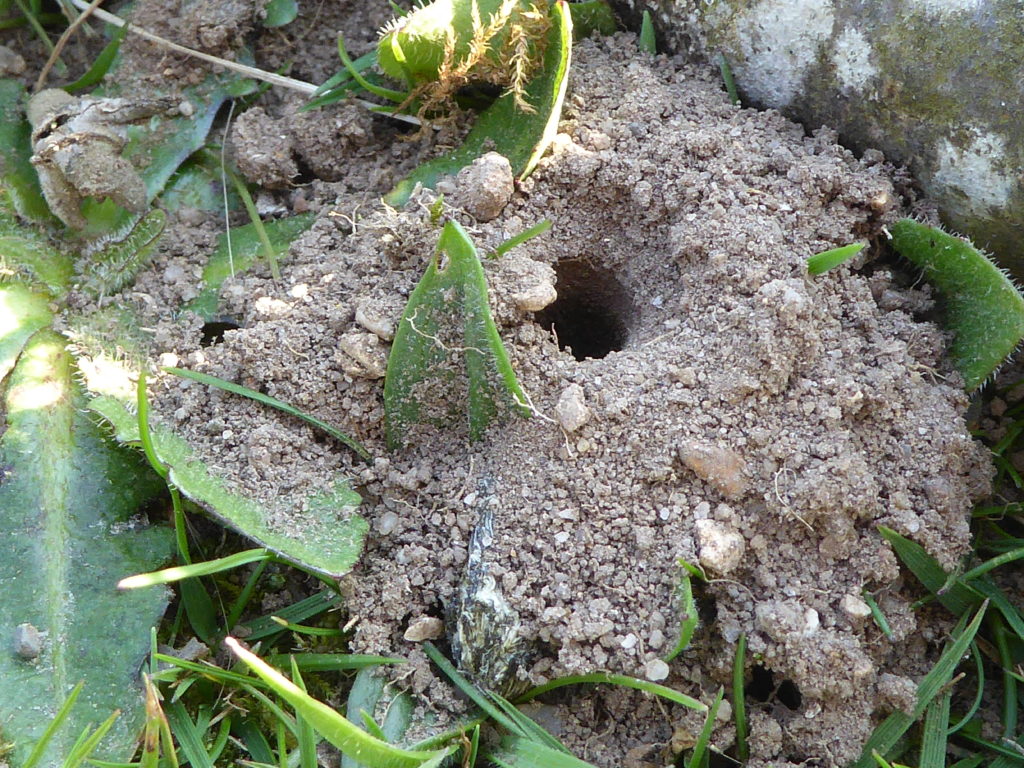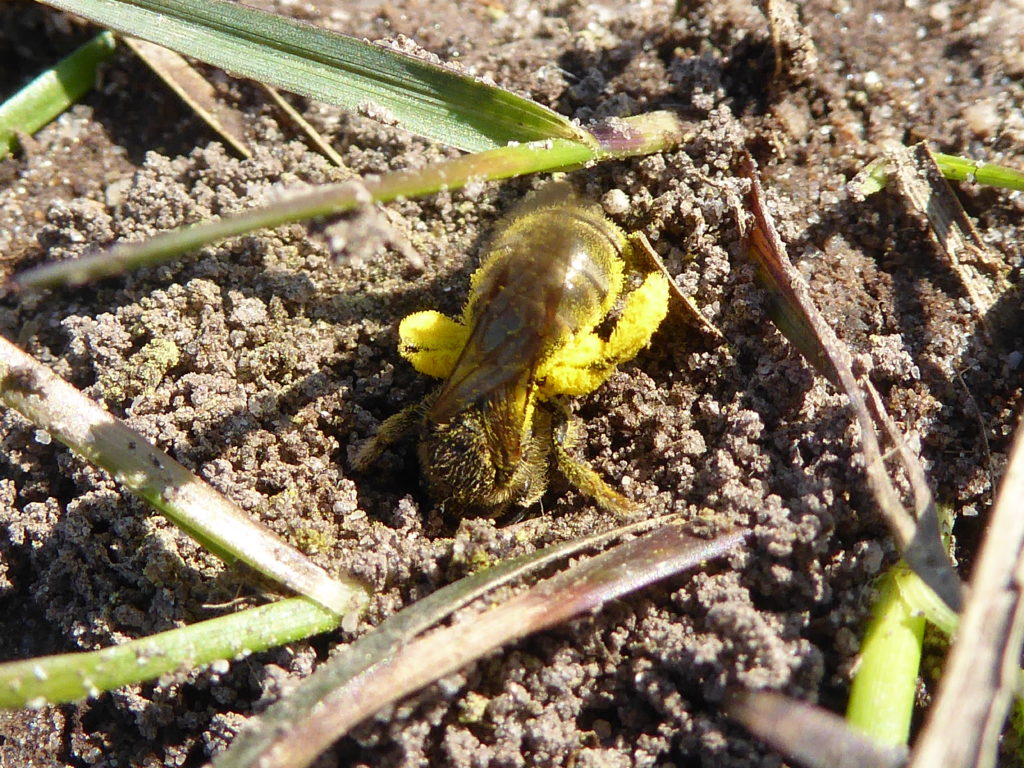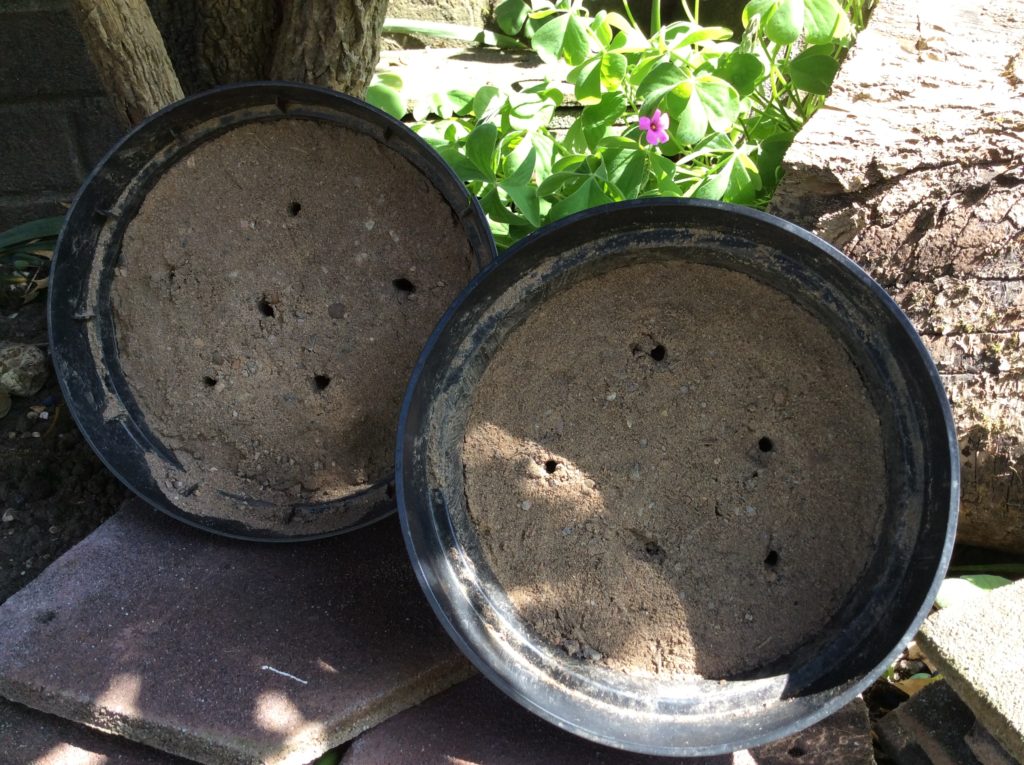
There are over 250 species of bee in Britain, of which surprisingly over 90% are ‘lonely’ otherwise known as solitary bees. Unlike the sociable honeybees or fuzzy bumblebees we often first think of, these live alone, do not make honey, do not have a queen and do not live in hives. As they don’t have a store of honey to protect, they are not aggressive so they are perfect to observe up-close and, as important pollinators, should be encouraged into your garden or allotment. Read on to learn more about these special insects and how you can help them.
A hidden world:
Solitary bees vary noticeably in size, appearance and where they choose to nest. Almost 70% are called mining bees (genus Andrena) and nest in underground burrows. Bees that nest in holes in walls and dead wood are called cavity nesting bees, such as mason bees. This blog will focus on mining bees as they are often easily overlooked until you know where to find them!
Have you ever noticed unusual volcano-shaped mounds of earth on bare patches of ground in open sunny places; particularly sandy and disturbed soil on warm south-facing slopes? This is the work of mining bees who excavate nesting tunnels in the earth. The hole is the entrance to the nest cavity and each nest is the work of a single female. Some species prefer to nest in vertical clay and chalk cliffs. You may have noticed small holes in exposed earth or sand when visiting the beach.
Although many species nest close to each other and don’t appear to be lonely, this is not social behaviour. They gather because the habitat is just right for their needs.
Two common spring-flying species to look for are: Ashy mining bee – females are distinctive honeybee-sized with striking black and grey/white markings. Nests are often near fruiting trees and crops of bright yellow oil-seed rape.

Tawny mining bee – females are also honeybee-sized with dense furry orange / red hair. Commonly found nesting in garden lawns and school play fields.
Go to Bumblebee conservation for more information about how to identify solitary bees.
A short but busy life cycle:
Most mining bees’ nest once each year. Offspring of species active in spring complete their development in late summer – egg – larva – pupa – and over-winter as adults. It is the males that emerge first from the nest awaiting the females, and once mated their brief life ends! Females then find a suitable nesting site to dig a nest and lay their eggs. The eggs hatch into larvae and feed on a store of pollen and nectar that she collects for the nest. Larvae then develop, pupate and emerge the following spring to repeat the cycle.
Find a comfy place to site and enjoy watching these lovely insects:
Returning bees are easy to spot as their back legs will be covered in yellow pollen. They can then be relatively easy to photograph – you need to patently wait to see a head reappear from tunnel entrance.
Look out for some of the fascinating parasites associated with them such as bee-flies and nomad bees. The bee-fly, a fuzzy bumble-bee lookalike with a long proboscis, is easily recognisable and hovers in front of a nest hole and skillfully flicks its eggs inside. Its offspring will hatch in the nest and eat the stored pollen as well as the young solitary bees!

‘Bee’ kind and give a helping hand:
Commonly made homes for cavity-nesting bees are bee hotels, with drilled wood and dry hollow plant stems, which are ideal for the red mason bee, leaf cutter bee and wood carder bee.
However mining bees won’t use this type of home, but can be attracted by leaving patches of bare earth in an undisturbed area of your garden. You can also attract them by providing an artificial home suited for their needs! You can do this by mixing sand, gravel and soil in a container and allowing this to dry in the sun before adding some enticing holes for its future residents. There is a great step by step guide on this website – Mining bee home

To help attract them into your garden you’ll need to provide plenty of nectar-rich flowers close by. A shallow dish of water with stones to rest on will also be appreciated. Have fun!
